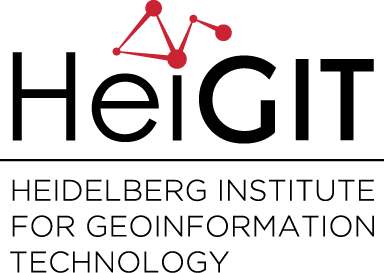Category: OSM
-
Option for wheelchair routing now available within OpenRouteService
We are happy to announce that the first version of the wheelchair routing profile is now available online within OpenRouteService and goes into beta testing phase. Currently, there is a separate version (http://openrouteservice.org/wheelchair-2.1/) for testing that contains this new feature, which currently covers Germany only. However, after beta testing, it will also be available via…
-
How to combine OpenStreetMap and Airborne Laser Scanning data for updating Digital Elevation Models?
The answer can be found in our most recent paper “Updating Digital Elevation Models via Change Detection and Fusion of Human and Remote Sensor Data in Urban Environments” that has just been finally released in the International Journal of Digital Earth. You can find a preprint version of the article freely accessible here: http://koenigstuhl.geog.uni-heidelberg.de/publications/2015/Hoefle/Klonner_et_al_2015_preprint.pdf Citation…
-
Deriving sidewalk information using citizen science becomes #ProjectOfTheWeek
We are happy to report that our task designed for the citizen science platform crowdcrafting.org was selected as their #ProjectOfTheWeek. This will help us to finish our experiment to derive information about sidewalks using Mapillary street level imagery with the support of the crowd very soon. Sidewalk information is an important resource for accessible route…
-
City of Mannheim shows appreciation to Open Data engagement of GIScience group
On friday 3/13, Melanie Eckle, Steffen John and Stefan Hahmann of the GIScience group Heidelberg were invited to a special event at Mannheim town hall. The city of Mannheim showed appreciation to the engagement of the GIScience group during the Open Data Day in Mannheim. Melanie Eckle (distaster mappers Heidelberg) gave a presentation about the…
-
Derivation of an OSM graph with TMC LCL traffic information to provide real time traffic services
Increasing traffic, especially in urban areas, leads to more and more infrastructural bottlenecks and congestion inside transportation networks. The aim is therefore to use existing transport networks as efficiently as possible. Current traffic and incident reports from the Traffic Message Channel (TMC) are an important source of information to provide further services in the context…
-
Major Update for OpenRouteService Backend
Last few months, we have been working hard on a new backend for OpenRouteService.org. The new implementation is much more flexible and faster than before and supports more sophisticated routing profiles. The services are deployed on a new and more powerful server that makes it possible to update routing graphs based on OpenStreetMap data more…
-
Coverage of OSM highway features with corresponding GPS tracks
As can be seen in the WebGL visualisation of the GPS data collected by the OSM contributors in Heidelberg (reported earlier in this blog), the quantity of recorded GPS tracks along an OSM highway features depends on the feature class. It has already been found before that the GPS data is not equally distributed among…
-
Visualising GPS data from OpenStreetMap using WebGL
GPS data uploaded to the OpenStreetMap servers is a popular example of what is called Volunteered Geographic Information (VGI). The data has been (and is still) collected by the project contributors primarily to support mapping. As the inclusion of roads and paths in the map is a major goal of the project, the collected GPS…
-
Modeling the evolution of OpenStreetMap with Cellular Automata using a new VGI Contribution Index
Major research efforts have so far dealt with OSM data quality analysis, but the modality of the evolution of OpenStreetMap (OSM) across space and time has been barely noted. Therefore, a new study by Jokar Arsanjani et al. that has recently been accepted for publication in Transactions in GIS aims to analyze spatio-temporal patterns of…
-
OpenStreetMap and Mapsurfer.NET help to search for missing people
We know many examples when VGI data (e.g., OpenStreetMap, Wikimapia, etc.) help to cope with effects of various humanitarian disasters all over the world. The reason of using open crowd-sourced data is clear. The geographic data are available for free. If, for some reason, data are missing for a specific region, it is not a…
-
GIScience group covered by Rhein-Neckar-Zeitung
Our #mapforaccess mapping party has been covered in yesterdays issue of the local newspaper Rhein-Neckar-Zeitung (~80,000 copies per day in the Rhine-Neckar region). Enjoy reading! (Click to enlarge) Online version here.


